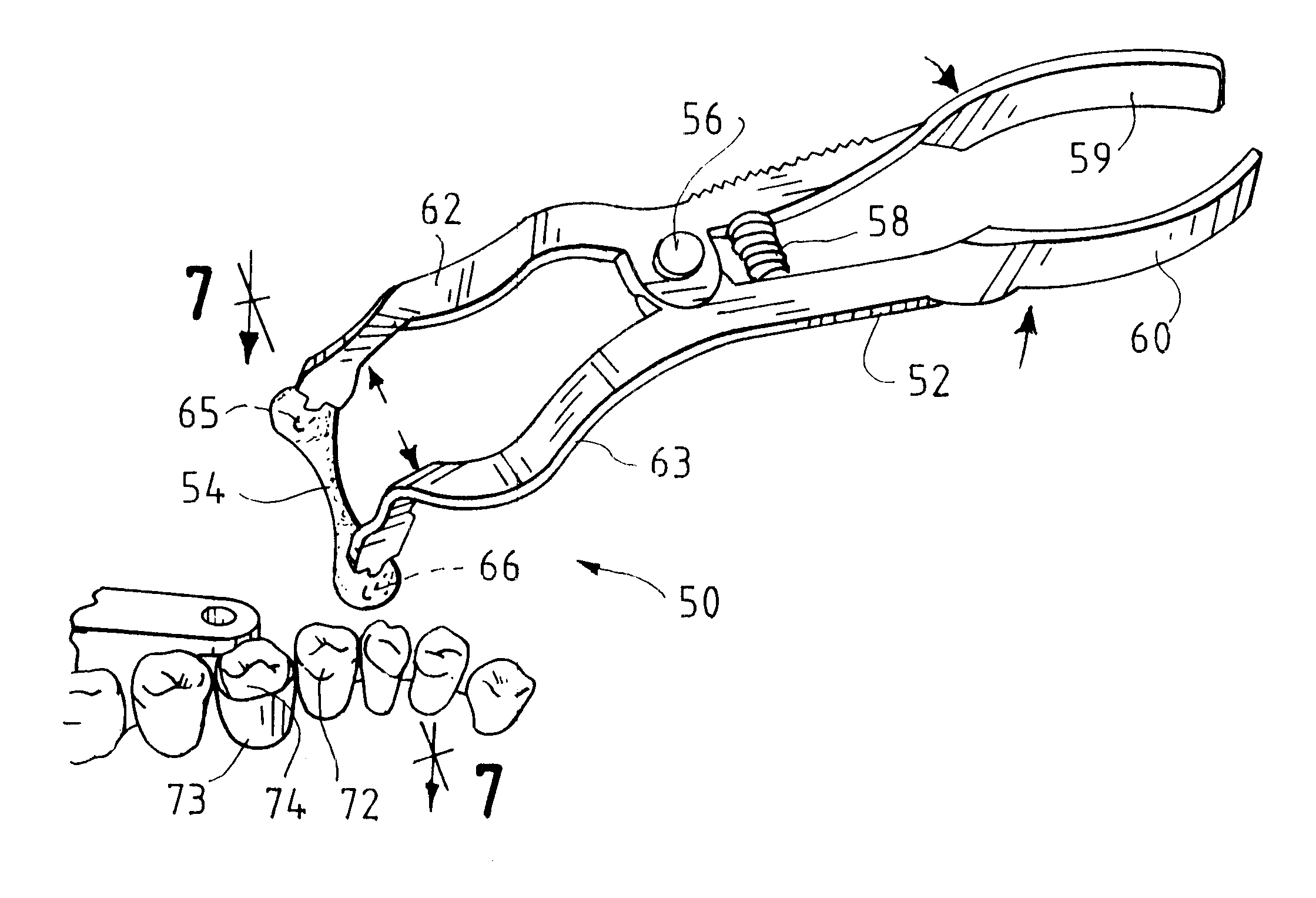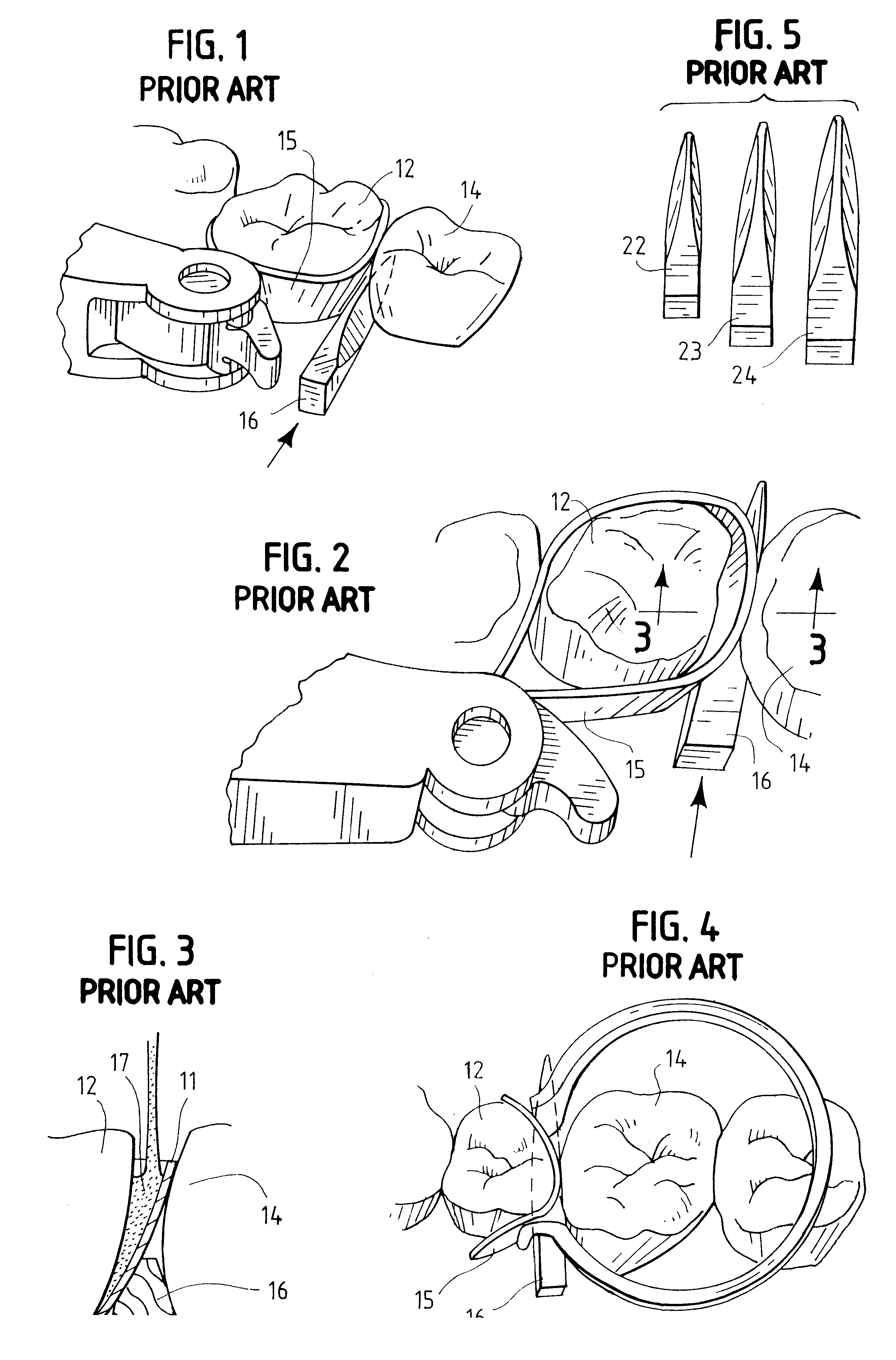Elastic dental device
a dental device and elastic technology, applied in the field of dental tools and devices, can solve the problems of inconvenient application for dentists, inability to properly conform to the desired shape of plastic cavity filling materials, and inability to place them in the tooth,
- Summary
- Abstract
- Description
- Claims
- Application Information
AI Technical Summary
Problems solved by technology
Method used
Image
Examples
Embodiment Construction
FIG. 6 illustrates a first preferred exemplary embodiment of the present invention which is shown generally at 10. As shown in FIG. 6, a stretching tool 52 provides a force which pulls on opposite ends of an elongated elastic member 54. As a result of the stretching of elastic member 54 the central portion of the elastic member 54 becomes much thinner. In the preferred exemplary embodiment, through application of the stretching force a central portion of the elongated elastic member 54 becomes very thin and is preferably approximately the thickness of dental floss.
Stretching tool 52 employs a central hinge 56 and a compressible spring 58. Inward force on handles 59 and 60 results in outward motion of stretching support members 62 and 63. As noted above, in the preferred exemplary embodiment, the stretching tool 52 is a conventional dental dam forceps as is known in the art. The tips of stretching support members 62 and 63 have protrusions 65, 66 for engaging corresponding holes or o...
PUM
 Login to View More
Login to View More Abstract
Description
Claims
Application Information
 Login to View More
Login to View More - R&D
- Intellectual Property
- Life Sciences
- Materials
- Tech Scout
- Unparalleled Data Quality
- Higher Quality Content
- 60% Fewer Hallucinations
Browse by: Latest US Patents, China's latest patents, Technical Efficacy Thesaurus, Application Domain, Technology Topic, Popular Technical Reports.
© 2025 PatSnap. All rights reserved.Legal|Privacy policy|Modern Slavery Act Transparency Statement|Sitemap|About US| Contact US: help@patsnap.com



